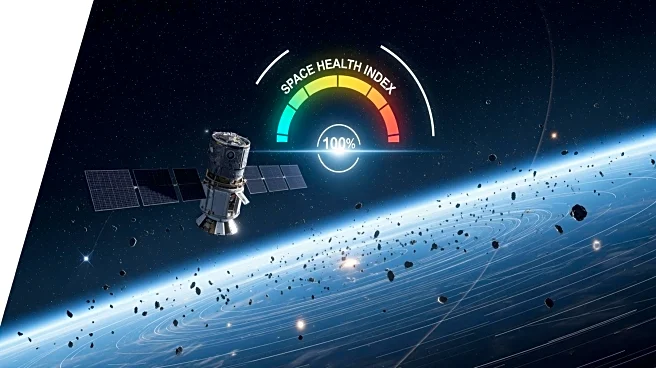What's Happening?
The European Space Agency (ESA) has introduced a new metric called the Space Environment Health Index to assess the current state of orbital congestion. The index currently stands at a level 4, indicating
a significant risk to long-term orbital sustainability, where a level 1 is considered sustainable. This high index suggests that space operations could become increasingly expensive and that certain orbits may eventually become inaccessible. The index evaluates factors such as size, orbital lifetime, maneuverability, and the risk of objects exploding or fragmenting in orbit. ESA aims to use this index to grade future space missions and constellations, similar to energy-efficiency ratings for household appliances. The goal is to create a common language for assessing the impact of space activities and to make the consequences of these activities more concrete.
Why It's Important?
The introduction of the Space Environment Health Index is significant as it highlights the growing concern over orbital congestion, which poses a threat to the sustainability of space operations. The index could influence regulatory and insurance frameworks within the European space industry, potentially leading to stricter licensing requirements for new missions. This development underscores the need for coordinated policy, transparent data sharing, and collective responsibility among space operators to manage orbital traffic proactively. The index may also serve as a tool for regulators to enforce new rules aimed at reducing space debris, aligning with the European Commission's EU Space Act, which seeks to establish robust debris mitigation regulations.
What's Next?
The ESA's new index could become a critical component in shaping future space policies and regulations. As the European Commission's EU Space Act progresses through drafts and industry feedback, the index may be adopted as a basis for future space-licensing requirements. This could ensure that new missions do not exacerbate the problem of orbital congestion. Additionally, space situational awareness companies and industry stakeholders may need to shift from reactive collision avoidance strategies to proactive traffic management to ensure long-term sustainability in space operations.
Beyond the Headlines
The introduction of the Space Environment Health Index could have broader implications for international space policy and collaboration. As space becomes more congested, there may be increased pressure on global space agencies and private companies to adopt similar metrics and standards. This could lead to more unified international efforts to address space debris and congestion, fostering a culture of shared responsibility and cooperation in space exploration and utilization.














